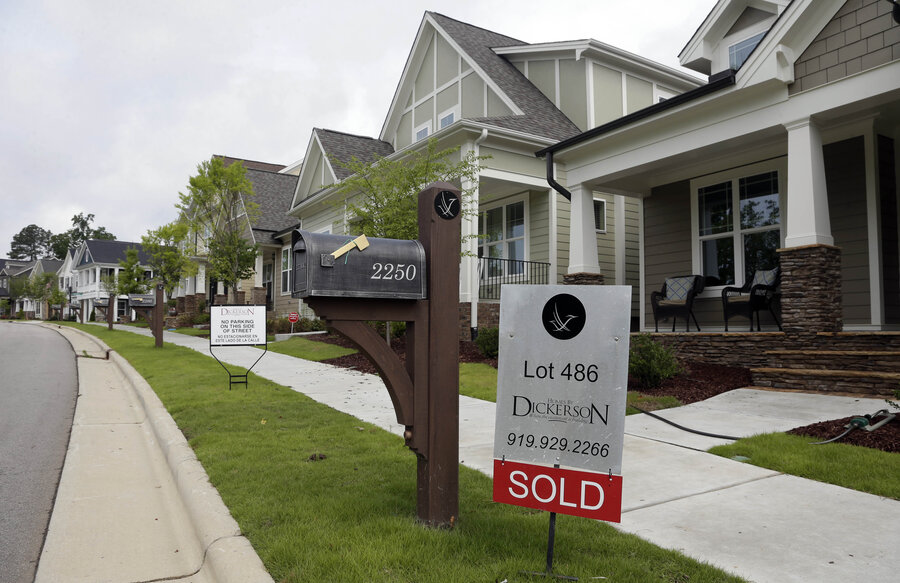How to choose the best mortgage
Loading...
Buying a home is probably the largest purchase you’ll make in your lifetime. And choosing the right mortgage is one of the most important decisions you’ll make in the homebuying process. With so many different options out there, it can be hard to find an affordable home loan that meets your financial goals.
Start by asking yourself “How much house can I afford?” After taking inventory of your debts, credit score, income and other monthly bills, you can make an informed decision about the terms of your mortgage.
Here are three key loan decisions you’ll need to make.
Mortgage type: Government-backed or conventional
There are two main types of mortgages: a conventional loan guaranteed by a private lender or banking institution, or a government-backed loan.
Most government-backed mortgages come in one of three forms:
- FHA loans, insured by the Federal Housing Administration, were established to make homebuying more affordable, especially for first-time buyers, by allowing down payments as low as 3.5% of the purchase price.
- VA loans are insured by the Veterans Administration and offer buyers low- or no down payment options and competitive mortgage rates. They’re available to current military service members and veterans only.
- USDA loans are backed by the U.S. Department of Agriculture and are geared toward rural property buyers who meet income requirements.
All three programs follow the limits for conforming loans and have low down payment requirements. More on that later.
Conventional loans, on the other hand, are offered and backed by private entities such as banks, credit unions, private lenders or savings institutions. Borrowers need good credit to qualify. This is because the loans aren’t guaranteed by an outside source — so the possibility of borrower default poses a greater risk for lenders. Conventional loans have terms of 10, 15, 20 or 30 years. They also require much larger down payments than government-backed loans. Borrowers are expected to put down at least 5%, but that amount can vary based on the lender and the borrower’s credit history.
If you don’t have a lot of cash saved up for a down payment but have solid credit and a stable income, a government-backed loan is likely the way to go. Keep in mind that if you choose a conventional or government-backed loan and you’re making less than a 20% down payment, you’ll have to pay for private mortgage insurance. If you can afford to save up a large down payment and build your credit score while lowering your debt-to-income ratio, a conventional loan is a great choice that can eliminate some of the extra fees and higher interest rates that may come with a government-backed loan.
Interest rate: Fixed or adjustable
Once you’ve chosen your loan, you’ll decide whether you want a fixed or an adjustable rate. Your choice determines the interest you’ll be charged.
The interest rate on a fixed-rate loan never changes. If you’re settled in your career, have a growing family and are ready to set down some roots, a 15- or 30-year fixed-rate loan might be your best bet, because you’ll always know what your monthly mortgage payment will be. It’s worth noting, though, that if other fees are rolled into your monthly mortgage payment, such as annual property taxes or homeowner’s association dues, there may be some fluctuation over time.
Adjustable-rate mortgages, or ARMs, have interest rates that reset at specific intervals. They typically begin with lower interest rates than fixed-rate loans, sometimes called teaser rates. After the initial term ends, the interest rate — and your monthly payment — increases or decreases annually based on an index, plus a margin. They most often appeal to younger, more mobile buyers who plan to stay in their homes for just a few years or refinance when the teaser rate approaches expiration. Paying a lower interest rate in those initial years could save hundreds of dollars each month that could fund other investments.
Loan size: Conforming or non-conforming
The amount of money you borrow tells your lender a lot about your level of risk — and it has a big impact on your interest rate. For this reason, home loans fall into two main size categories: conforming and non-conforming.
Conforming loans meet the loan limit guidelines set by government-sponsored mortgage associations Fannie Mae and Freddie Mac. In 2016, conforming home loans for single-family homes in most of the continental U.S. are limited to $417,000. In designated high-cost areas, such as Hawaii and Alaska, the conforming loan limit for single-family homes goes up to $625,500.
Loans can be non-conforming for a few different reasons. Some, called jumbo loans, are for borrowers whose loan amounts are higher than the conforming loan limits in their areas. Jumbo loans are considered riskier and come with higher interest rates to protect lenders. You’ll need to make a larger down payment (at least 20%) and have pristine credit to qualify for one. Other types of non-conforming loans include those made to borrowers with poor credit, high debt or recent bankruptcies.
If you want to stay within conforming loan limits, you’ll need to tailor your home search to properties priced below the loan limit for your area. Another way to ensure you qualify for a conforming loan is to save up 20% or more for a home that’s priced above your local limit.
The bottom line
All of these options might seem overwhelming at first glance. But bear in mind that the type of loan you’ll wind up getting will depend largely on your credit profile, income and overall financial goals. Before you start shopping for a home loan, take complete stock of your finances, and try to boost your credit score as much as possible.
If you need guidance, contact a lender or mortgage broker in your area to help you crunch the numbers and explore your options.
This article first appeared at NerdWallet.







